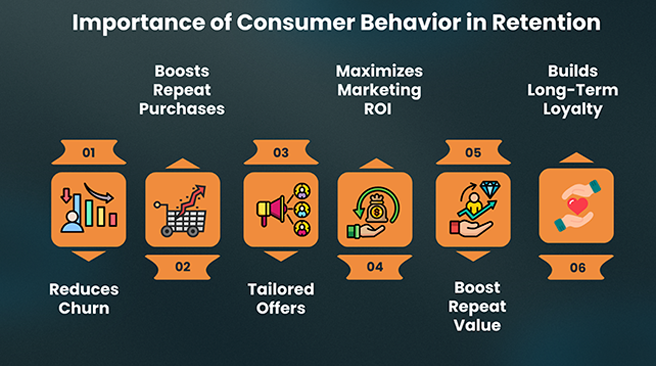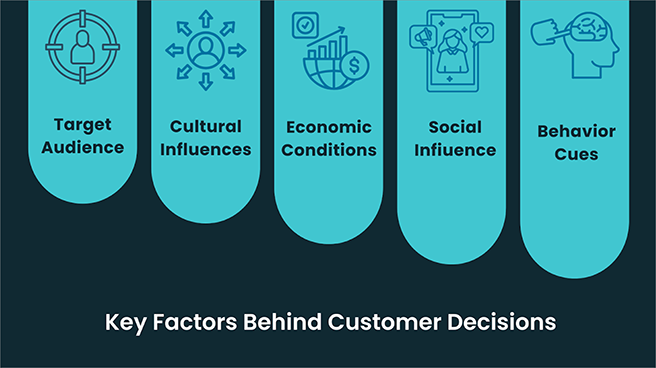Every store owner and retention marketer feels the rising cost of acquiring new customers. Ads are getting pricier, competition is fiercer, and the once-simple formula of “spend more to get more” doesn’t work the way it used to. Pouring dollars into acquisition might fill the funnel for a moment, but it’s like trying to carry water in a cracked bucket.
Here’s the truth: the real competitive edge for eCommerce growth in 2025 isn’t just finding new shoppers, it’s predicting customer behavior so you can keep the ones you’ve already won. When you know who’s about to churn, which shopper is primed for a repeat purchase, or how to deliver the perfect product recommendation at the perfect time, retention stops being a guessing game; it becomes your most profitable strategy.
That’s why many brands are now choosing to partner with data analytics experts who can turn raw numbers into fundamental retention strategies—because the sooner you act, the faster you stop losing shoppers to competitors. And once you see how these insights work in practice, it’s hard to imagine running your store without them.
This blog will show you how to turn raw customer behavior data into a system that reduces churn, boosts customer lifetime value (LTV), and sharpens your personalization efforts so that every shopper feels seen and understood. By the end, you’ll not only understand why customer retention beats acquisition in 2025 but also how predictive analytics puts your store ahead of the pack.
Because while others are still chasing cold leads, you’ll be busy keeping your best shoppers close—and your revenue even closer. Let’s dive in.

What Do We Mean by “Predicting Customer Behavior”?
Predicting customer behavior in eCommerce isn’t crystal-ball magic—it’s about using real shopper data to know what’s likely to happen next. Where traditional reports only show what has already happened, behavioral prediction lets you see patterns forming before your shoppers act on them. Instead of reacting after churn or missed sales, you can step in early, prevent losses, and double down on what works.
When you understand why a customer is slipping away, who’s ready for a repeat purchase, or which audience segment is discount-sensitive, you stop making assumptions and start making more brilliant moves. This is where your store shifts from playing defense to leading with precision—and why it’s crucial to understand the true cost of not using data analytics in your organization.
And to see how this power plays out, let’s break down a few real-world examples that every store owner and retention marketer can immediately relate to.
Sharpening the Definition: Behavioral Prediction in eCommerce
Predicting customer behavior is the practice of using purchase history, browsing patterns, and engagement signals to forecast future actions. Unlike broad averages or generic personas, it narrows in on what this customer is most likely to do—cancel, buy again, or upgrade. It’s how brands move from reacting to yesterday’s reports to proactively shaping tomorrow’s outcomes.
Where Prediction Outpaces Traditional Reporting
Traditional reporting tells you what happened. It includes a rear-view mirror, sales from last quarter, churn rates from last month, and email clicks from yesterday. Useful, but it leaves you reacting late.
Predictive analytics flips the lens forward. It asks: Who is about to churn? Which customers are primed for a second purchase? Who is most likely to respond to an upsell or a discount? This forward view doesn’t replace reports; it supercharges them with foresight. And foresight means action before revenue walks away.
Real-World Behaviors Brands Can Predict
A shopper who hasn’t returned in weeks is flagged for churn risk and receives a timely win-back offer. Another customer buys skincare products every six weeks, and the system highlights their repeat purchase likelihood, nudging them just before they’d run out. A loyal buyer picks up protein powder and receives a recommendation for a shaker or energy bar, increasing the upsell or cross-sell probability. Then there’s the subscriber who always waits for sales—their discount sensitivity is identified so promotions can be personalized rather than slashed across the board.
These aren’t guesses; they’re actionable insights that give retention marketers and DTC teams the power to intervene with precision. Once you understand these behaviors, the next step is knowing how to act on them, which is where predictive analytics becomes your most valuable growth lever.
Key Behavioral Patterns That Predict Loyalty or Loss
The strongest signals of whether a shopper will stay or slip away are often hidden in plain sight. By watching the behavioral patterns that drive loyalty or reveal churn risk, brands gain the ability to act before it’s too late.

- Time between first and second purchase – When the gap stretches too long, the likelihood of churn rises. Predictive models spot this early so that retention nudges can bring them back.
- Abandoned cart recovery failure – A cart left behind isn’t always the end, but repeated failures to recover it often forecast disengagement.
- Category and product preferences – Patterns in what shoppers gravitate toward reveal opportunities for personalization that build deeper loyalty.
- Browsing depth and engagement metrics – How long someone explores, what they revisit, and how often they engage are clear markers of future intent.
- Email open/click engagement over time – Declining interaction with campaigns is an early warning sign that a once-interested customer may be slipping away.
These predictive signals don’t just measure past behavior; they highlight the levers you can pull right now to increase retention and prevent loss.
What Predictive Analytics Can Help You Do
| Predictive Focus | Business Impact | How It Works | eCommerce Example |
| Prevent Customer Loss Before It Happens | Spot churn risks early | Tracks inactivity, drop-offs, and declining engagement | A subscriber is identified as likely to cancel next month |
| Maximize lifetime value | Grow customer loyalty and spend | Segments repeat buyers by value | High spenders rewarded with exclusive perks |
| Deliver Emails That Drive Action | Increase engagement with personalization | Uses browsing and purchase history for tailored content | A shoe buyer receives accessory recommendations |
| Lower the Cost of Returns | Reduce refunds and dissatisfaction | Predicts dissatisfaction using return history | Frequent clothing returners see detailed size guides |
| Target Promotions With Precision | Increase ROI on discounts | Flags discount-sensitive cohorts | Only deal hunters receive 15% off offers |
Tools You Can Use to Predict Customer Behavior
Having the right tools turns predictive analytics in eCommerce from a concept into a daily advantage. Whether you’re a store owner looking for plug-and-play insights or an analytics-driven team building advanced models, these platforms give you the ability to forecast shopper intent and act with precision.
Klaviyo Predictive Analytics: Retention Marketing’s Secret Weapon
Klaviyo goes beyond email blasts by forecasting churn risk, next order date, and predicted customer lifetime value (LTV). For retention marketers, this means segmentation is no longer guesswork—you can trigger win-back flows before a customer leaves or send replenishment reminders right when they’re likely to buy again.
GA4 Audience Triggers: Spot Shoppers Likely to Convert
Google Analytics 4 introduces predictive audiences, flagging users who are likely to purchase, churn, or engage more deeply. These insights connect directly to Google Ads, letting you run more brilliant campaigns where spend is optimized toward shoppers with the highest probability of conversion.
Shopify Analytics and Third-Party Apps: Insights at Storefront Level
Shopify’s native analytics give a baseline, but paired with third-party predictive apps, you can forecast repeat purchase probability, discount sensitivity, and product recommendations. This makes it easier for store owners to act quickly without needing a data science team.
Power BI With Cohort and Retention Modeling
For brands wanting a deeper view, Power BI dashboards can track cohorts and visualize retention curves over time. By layering predictive models on top, you get a clear picture of how different customer groups behave and how interventions like loyalty programs or email campaigns shift those patterns.
BigQuery + ML Integrations: The Advanced Playbook
For analytics-driven DTC teams, BigQuery with machine learning integrations unlocks custom predictive models at scale. This is where you can combine transactional data, browsing history, and campaign performance to build tailored churn models, LTV forecasts, or recommendation engines—perfect for advanced users who want predictive insights woven into every decision.
Real Examples of Predicting Customer Behavior
Understanding customer behavior is essential for businesses aiming to thrive in today’s data-driven landscape. Leading brands leverage advanced analytics and machine learning not only to predict which customers are likely to churn, buy more, or engage, but also to act on these insights with precision-targeted marketing and retention strategies. These predictive techniques empower companies to maximize customer lifetime value, optimize personalized recommendations, and segment audiences for more resonant campaigns.
To illustrate how these concepts come to life, here are real-world examples from globally recognized brands demonstrating the power and impact of customer behavior prediction in action:
| Scenario | Solutions | Case Study | Key Outcome |
| A subscription brand has high churn | Churn prediction & triggered retention outreach. | Netflix uses churn models and targeted engagement to reduce churn. | Churn 2.3% improved retention. |
| Store with a growing catalog | AI-based personalized recomm. | Amazon’s Recommendation engine drives 35% of sales. | 35% sales from recommendations. |
| DTC brand retargeting uncertainty | Predictive segmentation by value & recency. | Nike AI segmentation personalizes campaigns by lifestyle & location. | Higher ROI and Loyalty. |
When to Start Using Predictive Analytics
Predictive analytics becomes most valuable when your business has enough customer data and recurring patterns to analyze. It’s not just about having numbers — it’s about knowing when those numbers can unlock real, actionable insights. Here’s a step‑by‑step way to understand the right time to introduce it:
Step 1: Gather a Meaningful Data Set
Start considering predictive analytics once you’ve collected at least 3–6 months of customer data. This ensures your models have enough purchase history, browsing behaviors, and engagement patterns to generate reliable forecasts.
Step 2: Evaluate Campaign Effectiveness
Suppose your current marketing campaigns are no longer driving improvements in customer retention or repeat purchases. In that case, it’s a sign you need more profound insights into customer behavior, which predictive analytics can provide.
Step 3: Assess Acquisition vs. Lifetime Value
When your business spends more on acquiring customers than the lifetime value (LTV) of the customers you retain, predictive analytics can help by identifying high-value customers early and guiding more intelligent allocation of marketing budgets.
Step 4: Recognize Behavioral Pain Points
Suppose you notice persistent issues, such as a high volume of abandoned carts or frequent site/app bounce rates. In that case, predictive models can surface the triggers behind these patterns and even anticipate which customers are likely to drop off — giving you a chance to fix it proactively.
Step 5: Scale and Optimize
Once you’ve addressed the above triggers, predictive analytics isn’t just problem‑solving — it becomes a growth lever. At this stage, you can start using forecasts to personalize offers, optimize inventory, and refine customer journeys based on data‑driven predictions.
Mistakes That Undermine Your Insights
When integrating predictive analytics into your marketing or customer strategy, inevitable missteps can limit the value you extract from the data. Here are the most common mistakes to watch for:
- Assuming one‑size‑fits‑all messaging works: Predictive analytics is built for personalization, yet many businesses still send generic campaigns. This approach overlooks tailoring messages by customer segment, purchase history, or predicted behavior, leading to lower engagement and wasted spend.
- Relying only on average metrics: Looking at metrics like average order value (AOV) gives a false sense of performance. For example, a high overall AOV could mask the fact that newer cohorts are spending less. Cohort‑based analysis reveals customer patterns over time and provides a more accurate picture.
- Using data only reactively, not proactively: If you only respond once churn has already risen or sales have dropped, you’re too late. Predictive analytics allows you to forecast these patterns ahead of time and act before problems spiral, whether it’s launching retention campaigns or adjusting inventory.
- Not acting on predictions: Insights are meaningless unless you operationalize them. A churn prediction should trigger a retention workflow; a product affinity score should guide recommendations. Companies that just “observe” predictions miss their most significant advantage — timely action.
- Overlooking data quality issues: Inconsistent, duplicate, or incomplete datasets can make predictive models unreliable. If the foundation is flawed, the predictions will be too, leading to misinformed business choices. Cleaning and validating your data should be a priority.
- Failing to align predictions with business goals: Predictive analytics needs a clear purpose, such as reducing churn by 10% or boosting LTV. If predictions aren’t tied to strategic goals, they stay theoretical and struggle to influence decision‑making.
- Overcomplicating models too early: Jumping into AI and advanced neural networks without first validating simpler models often creates confusion. Start with straightforward, transparent models that deliver quick wins and build trust before scaling complexity.
- Ignoring the customer’s experience: Predictions should enhance customer journeys, not harm them. Over‑targeting with too many messages or irrelevant product pushes risks frustrating customers. Balance predictive targeting with a respectful, value‑driven experience.
Conclusion
Keeping shoppers has become the true measure of growth in eCommerce, and predicting customer behavior is the lever that makes it possible. By transforming raw data into foresight, brands can prevent churn, improve lifetime value, and personalize with precision. While many are still reacting to yesterday’s reports, those who invest in predictive insights today will be the ones shaping tomorrow’s market. With expertise from teams like ZealousWeb, businesses can quietly turn analytics into action, keeping more shoppers engaged and loyal without losing sight of sustainable growth.












